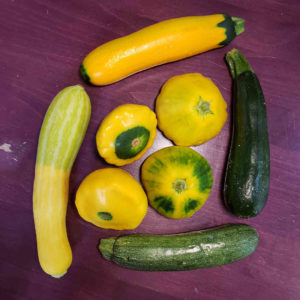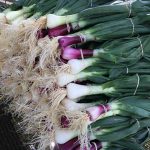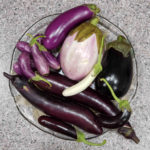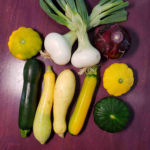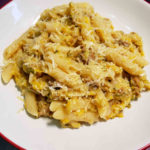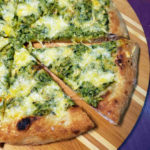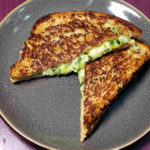Introduction
Some people think of summer squash as the specific variety of squash that I call yellow squash. But I think it is best to consider summer squash as a collection of squash varieties. There are many, including zucchini, yellow squash, zephyr squash, patty pan squash, and cousa squash. There are even varieties within the varieties. Zucchini can be dark green, light green, golden or striated. Zucchinis are generally smooth skin and elongated, but heirloom Roman zucchinis are ridged, and “8-ball” zucchinis are spherical. But at the end of the day, all of these summer squash varieties have similar texture, flavor and cooking properties.
Geeking Out
I like to geek out a bit and explore the genetic relationship between vegetables. All squash, both summer and winter, are cucurbits. That is, they are in the genus Cucurbita, along with cucumbers, melons, gourds and winter squash. All of the squash varieties that I lump together as summer squash are the same species: Cucurbita pepo. The fact that they are the same species may imply that they will have similar texture, flavor and cooking properties, but that’s not always the case. Consider spaghetti, acorn and delicata squash. These are all winter squashes, and they are also varieties of C. pepo! Genetically, winter squash are more diverse as they span four species: C. pepo, C. moschata, C. maxima and C. argyrosperma. I’ll write up winter squash in a whole different article.
Selecting and Storing Summer Squash
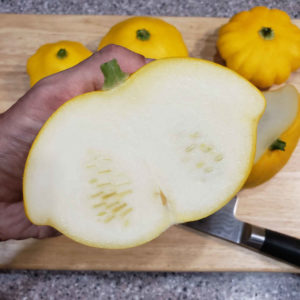
As with most vegetables, freshness is important. Sourcing summer squash from your garden, a friend’s garden, or your local farmers’ market are among the best choices for freshness. You are looking for smooth skin and firm texture. Any wrinking of the skin or softness or floppiness in texture indicates age. With summer squash, size really matters. Smaller squash are better. Zucchini can grow to be the size of a baseball bat, but at that size they will be full of seeds and the flesh turns kind of cottony. I generally look for summer squash that are about 8 ounces in size or less. Worthy of note, patty pan squash seem to maintain their quality as they get large much better than other varieties. The flesh to seed ratio stays relatively high, and their flesh maintains its nice firm texture. For demonstration, I sought out a large patty pan, and took a picture of its cross section. This guy was 1 pound 2.2 ounces, over double the optimum weight. But it was still great for cooking. Still, I usually select patty pans that are 8 ounces or less.
Summer squash should be stored in the refrigerator. For extended shelf life, enclose them in a plastic bag to hold in moisture.
The challenge of cooking summer squash
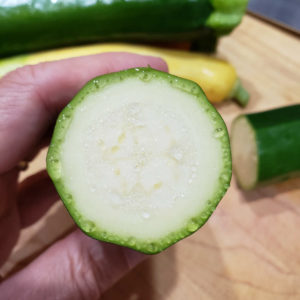
The challenge to cooking summer squash, in a word, is water. Slice a fresh summer squash and look at the cut edge. Immediately you will see water beading out of the cut, especially along the skin edge. I tried to look up water content of various vegetables to see where summer squash lies. Each resource varied by a percentage or two, and that variance makes sense. There are so many variables: how they were grown, what region they were grown, how ripe they are, how they were treated between harvest and measurement. But clearly, zucchini gets listed at the top percentages in line with cucumbers and lettuce. Surprisingly, zucchini has a higher water content than tomatoes, strawberries and melons. Some cooking techniques lead to soggy squash with flavor that can only be described as watery. Avoid those techniques! Below are some of the best ways I know to prepare summer squash.
Raw
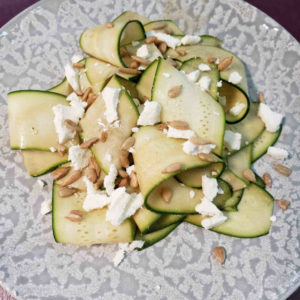
Raw summer squash has a nice crisp texture. Its flavor is mild, a little sweet and maybe a little nutty. One great option is to simply slice it up and add it to a mixed crudité plate. Slices of raw summer squash dipped in hummus or other vegetable dip is really nice. Another option is to use a mandolin to slice it paper thin to make a salad. The thinner the slice, the easier it is to curl it without breaking. Simply toss the slices with your favorite vinaigrette and top with some chèvre or feta and sunflower seeds or other crunchy nut.
Charred
I’m listing charred summer squash second, because it is the closest to raw among my favorite techniques.
Summertime is grilling time. Of course, zucchini and other summer squashes are going to hit my grill. My standard method used to be to cut the squash into planks, toss with salt and pepper and olive oil, and then grill them until cooked through. This simple method is my default go to for so many grilled vegetables. But, with summer squash, this often resulted in watery tasting squash.
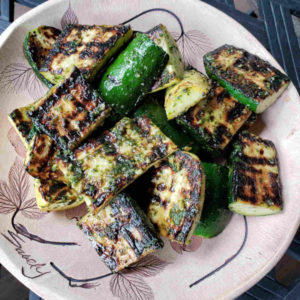
I just recently discovered the fix to this when we enjoyed an elegant charred zucchini dish at Market and Moss. Their rendition had many more accompaniments than I would ever do at home, but the technique demonstrated on the squash was a game changer for me. The idea is simply to expose a cut side of the squash to extremely high heat, so it picks up a nice and tasty char, while leaving the majority of the squash in its crispy raw state.
This is how I now grill summer squash: Slice the squash in half, and let it sit for a few minutes, allowing some of its water bleed out. Get the grill piping hot. Just before grilling, wipe the squash’s cut side with a paper towel to remove as much water as possible, then use a pastry brush to evenly apply olive oil over the cut side, and set them on the hottest part of the grill, cut side down. Leave them in place a couple minutes before you consider peeking. When you do peek, try to determine the hottest and coolest parts of the grill, and adjust where the pieces of squash lie to even out the charring. Don’t flip them. When they have a nice char across the cut surface they are ready to take off the grill. How you finish them is up to you. A couple simple ideas is to toss them in a nice pesto, or reapply olive oil to the charred side, sprinkle with salt and pepper, and then drizzle something flavorful over the top.
The idea of charring with high heat isn’t only for the grill. You can use the same principles with a pan on the stove top or in the oven under a broiler.
Melted

I waited until third to list this method, but it is my favorite. It’s fast to make, it can be used in many different dishes, and the results are incredible. A more descriptive name for this technique would be “grated and sautéed” but that doesn’t describe the result. The result is a creamy texture that could even be described as spreadable. Sautéing gently coaxes the water out of the summer squash. It’s incredible to see the squash reduce to less than half its original size in about 15 minutes. The subtle flavor of the squash gets concentrated, making it stand up better in a dish. Melted summer squash takes well to many different seasonings. For example, simply sauté a couple cloves of garlic or a couple teaspoons of chopped fresh rosemary in the olive oil that you then use to sauté the squash. Or add in a teaspoon of dried herbs such as thyme or oregano early in the sauté process or chopped fresh herbs late in the sauté process. I won’t try to describe the method any further here. For more information, follow any of these links to see how I’ve used melted summer squash in pastas, pizzas, frittatas, and even grilled cheese sandwiches.
Caramelized
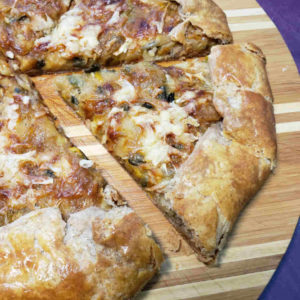
Where melted summer squash takes about 15 minutes on the stove top, caramelized summer squash can take up to an hour. While I described the cooking method for melted summer squash as sautéing, it’s really poaching in its own juices. Because it is poaching, the melted squash doesn’t gain any color. If you keep going after the majority of the water has been released, the melted squash will continue to transform. As it caramelizes, it will dramatically change flavor from delicate to hearty. Certainly, you can caramelize summer squash on its own, but I generally caramelize it along with onions as I describe in this post. Caramelized summer squash and onions can be a dish on its own, but I like to make it the star of a more composed dish such as a savory galette, pizza or pasta.

